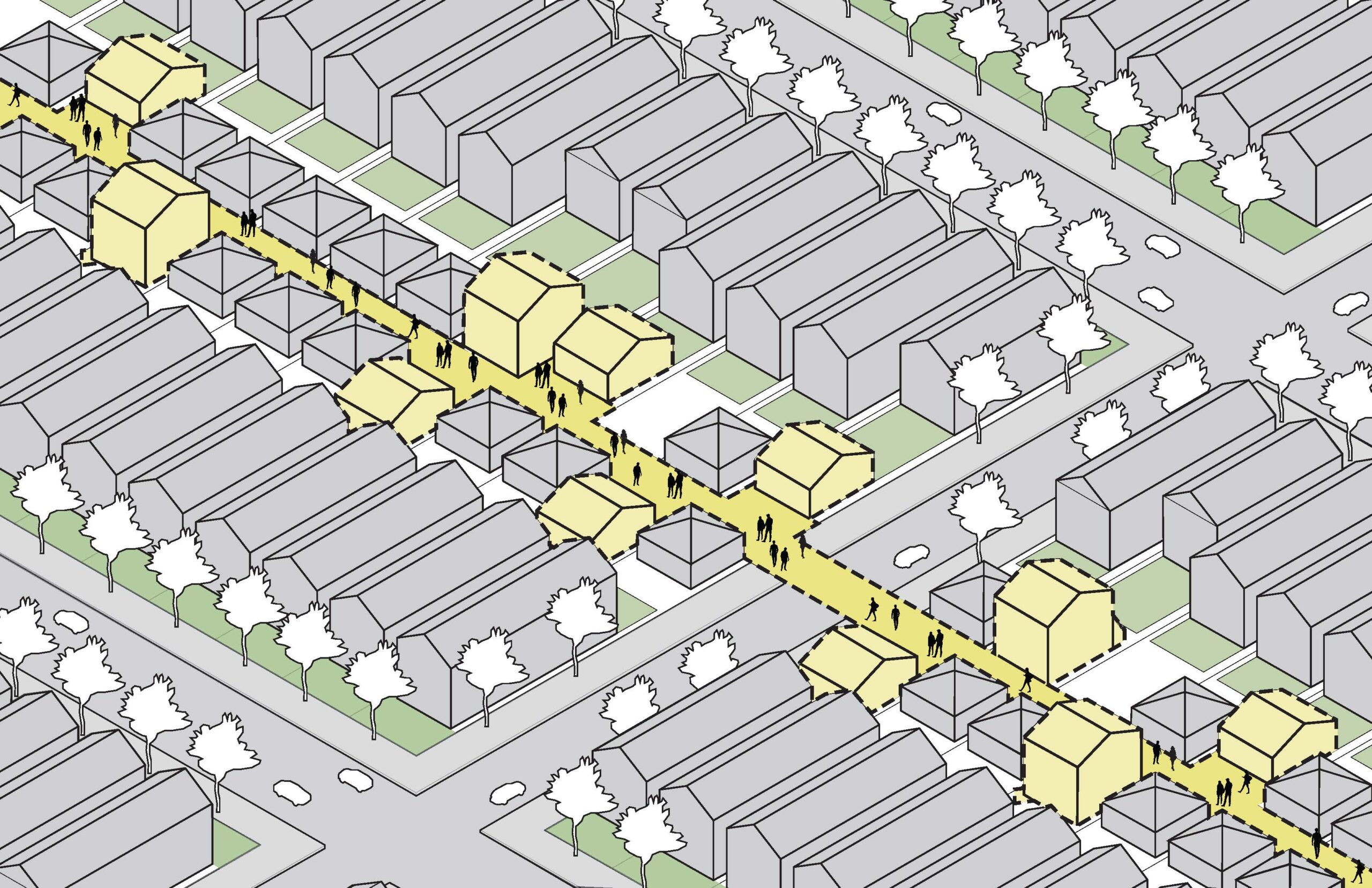
The Chicago ADU and the Creation of an Overlay Neighborhood

In December 2020, the Chicago City Council Committee on Housing and Real Estate made the historic decision to authorize an Accessory Dwelling Unit (ADU) three-year pilot program in five zones throughout Chicago. This pilot program overturns a law banning the construction of ADUs, which had been in place since the late 1950s. The re-legalization of ADUs was introduced via an ordinance in early May as a way to increase opportunities for potential new homeowners by expanding affordable options.
At bKL, we see the benefit of ADUs not only for these individual homeowners, but also for creating stronger, layered communities. Chicago, more so than other cities, is often described as a series of neighborhoods, each with a unique (but occasionally monolithic) character. An implementation of ADUs at a broad scale would act as an overlay network on this existing urban grid. This overlay network would both introduce a greater variety of housing typologies as well as activate previously unoccupied space—impacts both long associated with increasing neighborhood vibrancy.
To date, a great deal of focus has been concentrated on the ADU as a single unit, but the discussion around the potential positive impacts of the broadscale implementation of ADUs remains a relatively untapped topic in the Chicago community. We are offering some initial insights and possibilities to help the architecture and development community visualize a broad implementation of ADUs that is still deeply responsive to the neighborhood, community, and site.

1. Existing factors cue towards the ideals of a responsive overlay community.
Examining the future sites of ADUs offers a great deal of insight into how these networks of homes might operate. What are the demographics of the neighborhood? Are alleys used as play spaces for neighborhood kids, by joggers and walkers, or back patios for cafes? What forms, functions, and infrastructure might serve the community? By taking into account both how these areas currently function, as well as potential needs of the community, greater perspective is gained as to how ADUs and their implementation can have a positive impact on their neighborhoods.

2. An ADU overlay network offers a unique, organic character.
Occupying basements and alleys, the future sites of ADUs offer insight into how these networks of homes might operate. The alley, in comparison to the city street, is less structured and therefore more adaptable to the pedestrian experience than the city street. Its organic, less rigid nature allows humans to interact more naturally than they can within the exacting framework of the neighborhood grid. Alleys within cities are in fact often already sources of community. Neighbors meet each other while taking out the trash, kids ride bikes or play basketball off garage hoops, and guests arrive through the alley for a backyard gathering. With these qualities in mind, how will an ADU overlay in alleys differ from the street view? What structures or design elements can be introduced to create the desired effect? How can it add authentic character to the community?
Chicago also relies heavily on its alleys for services. Garbage removal, maintenance to telephone lines and electricity, and parking for residents are all also part of the alley’s purpose. How do you account for these services while simultaneously rendering the area supportive of meaningful residential use?

3. ADU adoption will have a threshold to cross for implementation success.
An important consideration when examining the large-scale implementation of ADUs is determining at what point does the concentration of ADUs in a given area begin to both make a positive impact on the community and become a truly viable option for potential new homeowners. The ability for the ADU overlay to reach this tipping point of success will be crucial to its widespread adoption.
In conversation with this implementation consideration is the scale of introduced infrastructure changes. Are changes implemented micro or macro? How do changes interact with the existing structures or lack thereof? What broad strokes are easy to implement and carry the greatest efficacy? Conversely, how can a series of smaller, more individualized additions or changes create something that feels organic?

4. Ownership creates successful communities.
One of the aspects of an ADU overlay that will make this pilot program (and hopefully future iterations) a success is to create ownership. Ownership invites a commitment to the community itself, and a desire to uphold the character and quality of the neighborhood.
With this in mind, what assistance can be offered to make these projects a success? What do people need most to implement positive networks in their communities? How do you make assistance programs flexible and equitable?
In Conclusion
The future of the ADU and the overlay network it will provide offers a myriad of tailored possibilities suitable for the existing neighborhoods as well as meeting the needs of new community members. The framework offered by bKL aims to introduce these critical topics for further discussions, setting a baseline for exploration and to spark further studies of feasibility and potential. The future of the ADU is here, and it will be as bright as we commit to making it.